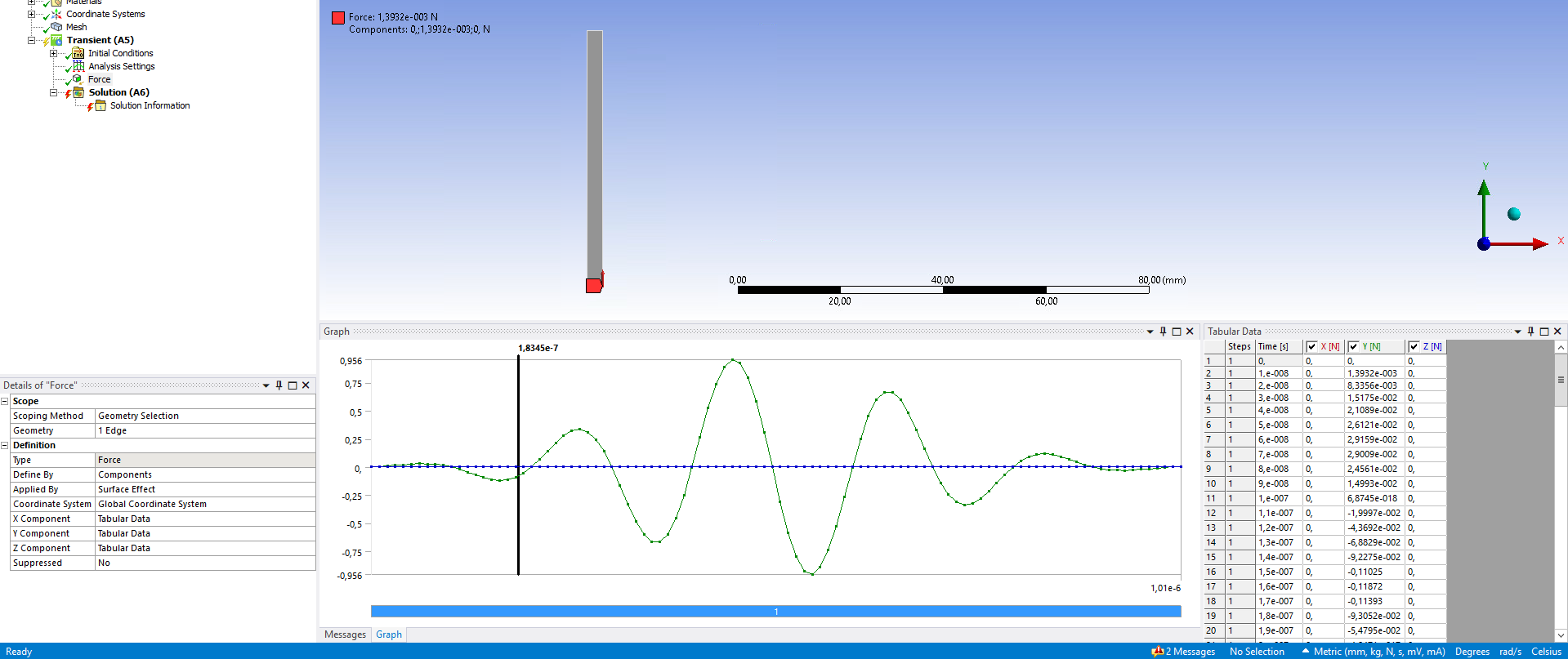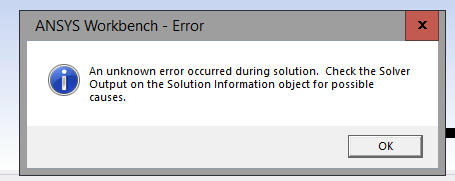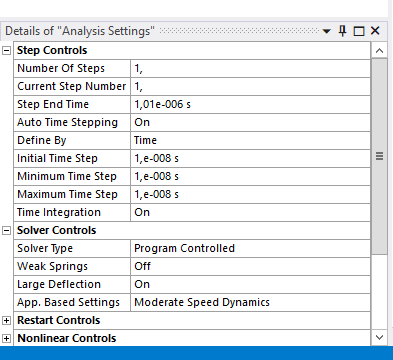TAGGED: 2D, convergence, transient, transient-analysis, transient-structural
-
-
October 1, 2021 at 10:45 am
Sachin_Mechanical
SubscriberGood Morning
Please could I get assistance with this? I have a simple 2D shape (3 mm x 250 mm) and I need to apply a Gaussian pulse wave (5 MHz at a sampling frequency of 1e9 and 200 cycles - this means that I have 40001 data points).
The load has been applied as a displacement to the left end of the rectangle (a force does not work as an error pops up saying that there is no body to apply to).
I have applied fixed support to the other end (right end) of the rectangle and frictionless support to the lower edge of the rectangle as it is axisymmetric.
I have attached photos of what the Analysis Settings are and the excel file with my data points.
I keep on getting these errors and am unsure how to resolve them. Please could I get help with this?
October 1, 2021 at 10:57 amErik Kostson
Ansys EmployeeHi
It complains that the elements are distorted - ultrasonics in solids is typically small amplitudes, so make sure you are not exciting this too hard - also want to solve with.
Also axisymmetric it is an axisymmetric condition so radial motion is zero on the symmetry axis - so very strange set up/excitation (you want to excite Y I suppose which is OK) - how does the real structure look like and what type of excitation waves do you want to study, ans why so many cycles, normally one bursts with say 5-20 cycles.
Also see this discussion for some hints - seems some user knows a bit about this type of simulations.
All the best
Erik
October 1, 2021 at 11:14 amSachin_Mechanical
SubscriberHi Erik
Apologies I do not know how to reply to a comment.
This is for my research topic where I am testing the couplant interface between the transducer and metallic structure. So for this kind of testing, usually a high frequency is used (1MHz - 10MHz). The 5Mhz was determined using the dispersion curves (group velocity vs frequency). The wave form is a longitudinal mode so it will be propagating in the x-direction in the screenshots.
The reason for a large number of cycles is to ensure that no other modes will be present when the wave propagates through the rod.
The actual structure is a 6mm diameter steel rod. Is it easier to model with 3D instead of 2D?
October 1, 2021 at 11:35 amErik Kostson
Ansys EmployeeHi
See the comments and the video, where they actually use a guided wave in the rod (force excitation always) in 3D.
If you do this in 2D which is fine for the symmetric type of modes in the rod, you would need to have the radius (direction) of the rod along x, and the length dimension of the rod along y direction (so opposite of what you have). Use then a Y force excitation on the bottom of the rod (constant to excite S0 type of waves), since this is transient one does not need BC (fixed), start with a 5 cycle burst of 5 MHz, then you should see the guided wave going up or down along y direction. X=0 and the axis are the symmetry axis of the model so the centre line of the rod should be on the y-axis.
The dt, so time step (fixed time step and small deflections) should be in your transient 0.1 *(1/5MHz) (so 0.1*1/f_centre_excite). THe mesh size should be about wavelength_guidedwave/8. Search the internet for guided waves and finite elements and you will get lots of hits to look at (e.g., Imperial College NDE group has many publications and thesis that are available online)
The above are illustrated below.
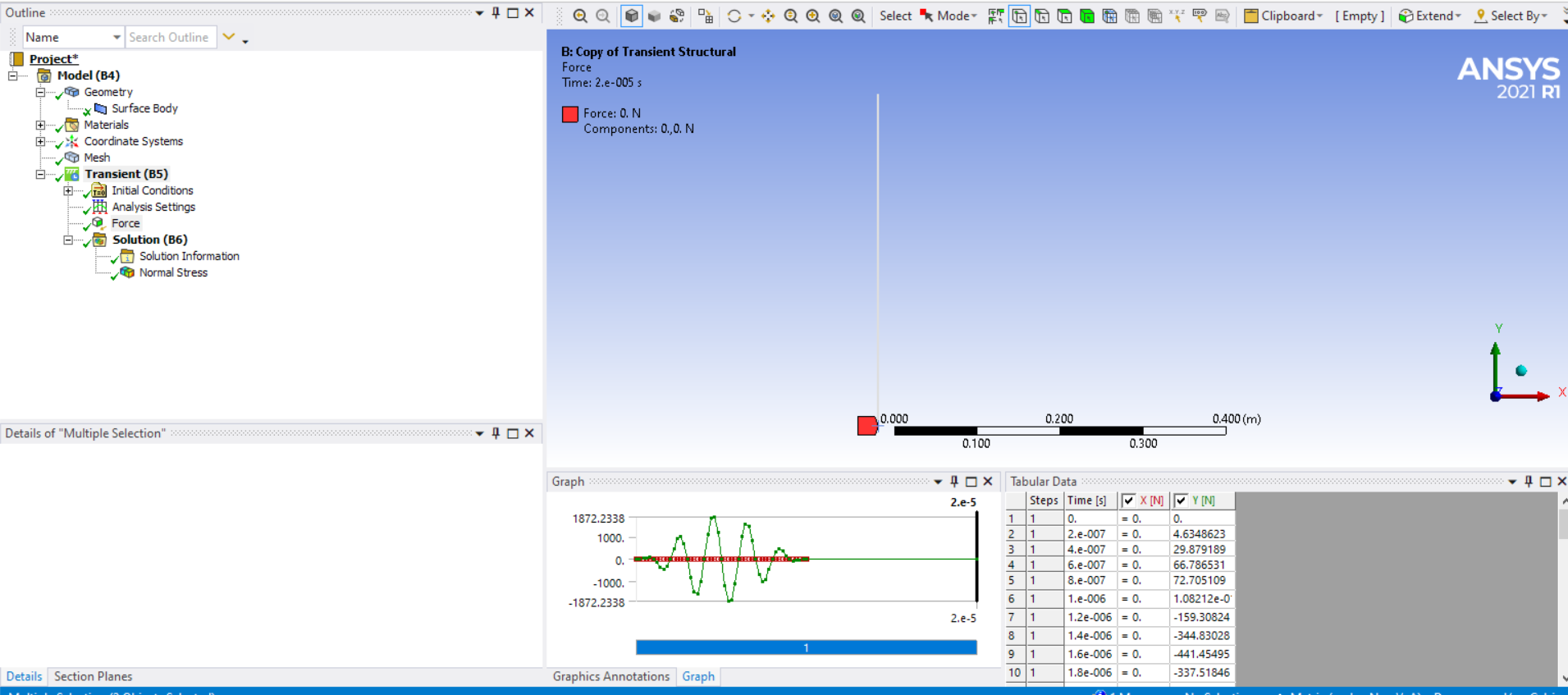 And the S0 type mode is shown below, propagating along the pipe (so y-dir).
And the S0 type mode is shown below, propagating along the pipe (so y-dir).
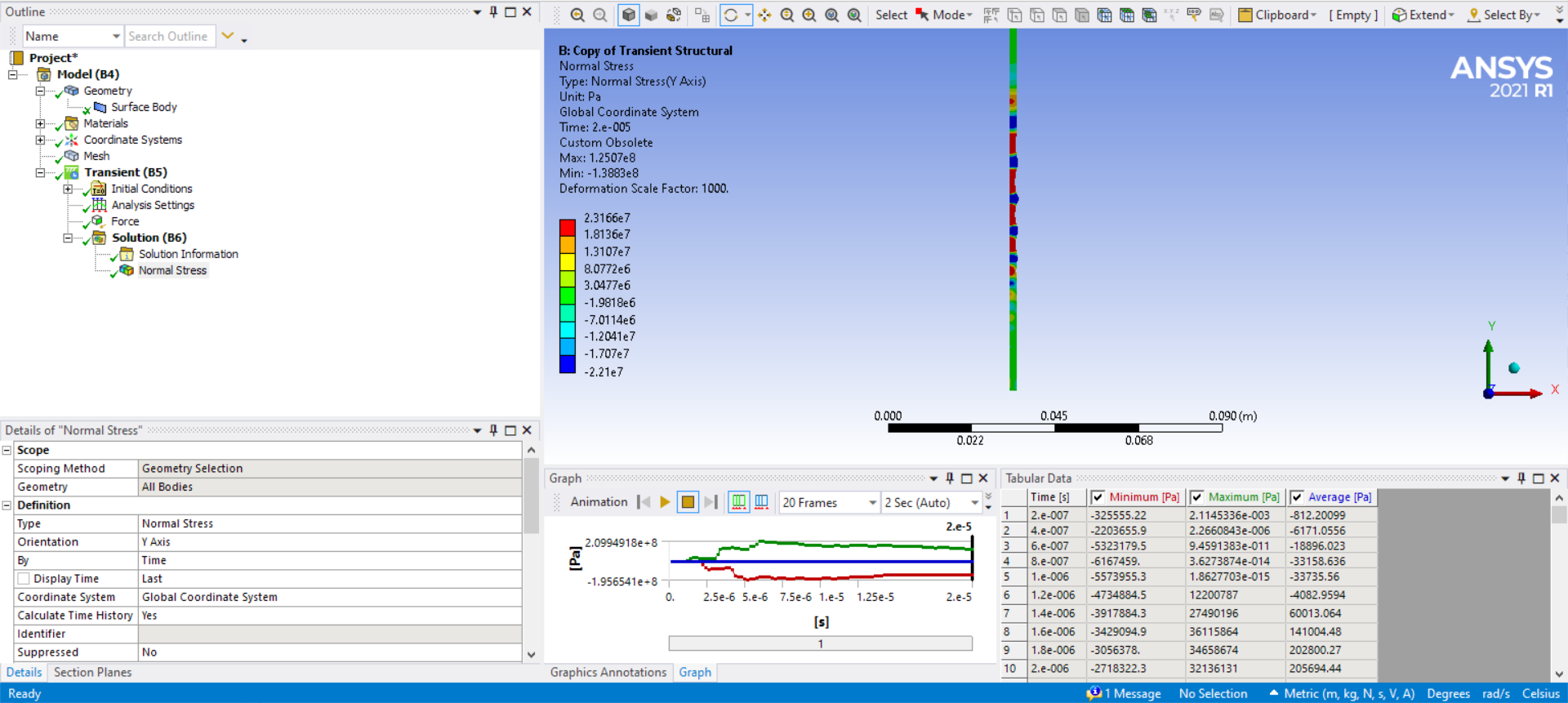
All the best
Erik
October 1, 2021 at 11:56 amSachin_Mechanical
SubscriberAwesome. Will give this a try as well as the Explicit solver and see if I come right.
Thank you for your assistance!
October 1, 2021 at 1:16 pmOctober 1, 2021 at 1:55 pmErik Kostson
Ansys EmployeeHi
Ansys employees are not allowed to share or download files.
You seem to be in 3D, start with the 2D example it should run faster , and axisymmetric.
SO it looks like it is 3D. Set it to 2D. See here how to do that (make sure the geometry is in the XY plane as explained in previous posts):
I notice that the rod is very small - can you also make like a 0.002 m radius and 0.2 m length(y-dir).
Also make sure that the element size is like wavelength_guidedwave/8. so if it travels at 5000 m/s then mesh = (1/8)*5000/f_centre (5MHZ?).
Also turn off large deflections and auto time stepping (so use a fixed time step of 1E-8 s).
Thank you
Erik
October 4, 2021 at 8:24 amSachin_Mechanical
SubscriberHi Erik
Thank you for your assisstance! I got it working.
Kind regards
October 4, 2021 at 8:27 amErik Kostson
Ansys EmployeeThat is great - see my other reply also in the Explicit forum.
Thank you
Erik
Viewing 8 reply threads- The topic ‘2D Transient Ultrasonic Wave Transmission’ is closed to new replies.
Innovation SpaceTrending discussions- LPBF Simulation of dissimilar materials in ANSYS mechanical (Thermal Transient)
- Convergence error in modal analysis
- APDL, memory, solid
- Meaning of the error
- How to model a bimodular material in Mechanical
- Simulate a fan on the end of shaft
- Nonlinear load cases combinations
- Real Life Example of a non-symmetric eigenvalue problem
- How can the results of Pressures and Motions for all elements be obtained?
- Contact stiffness too big
Top Contributors-
4177
-
1487
-
1363
-
1194
-
1021
Top Rated Tags© 2025 Copyright ANSYS, Inc. All rights reserved.
Ansys does not support the usage of unauthorized Ansys software. Please visit www.ansys.com to obtain an official distribution.
-

